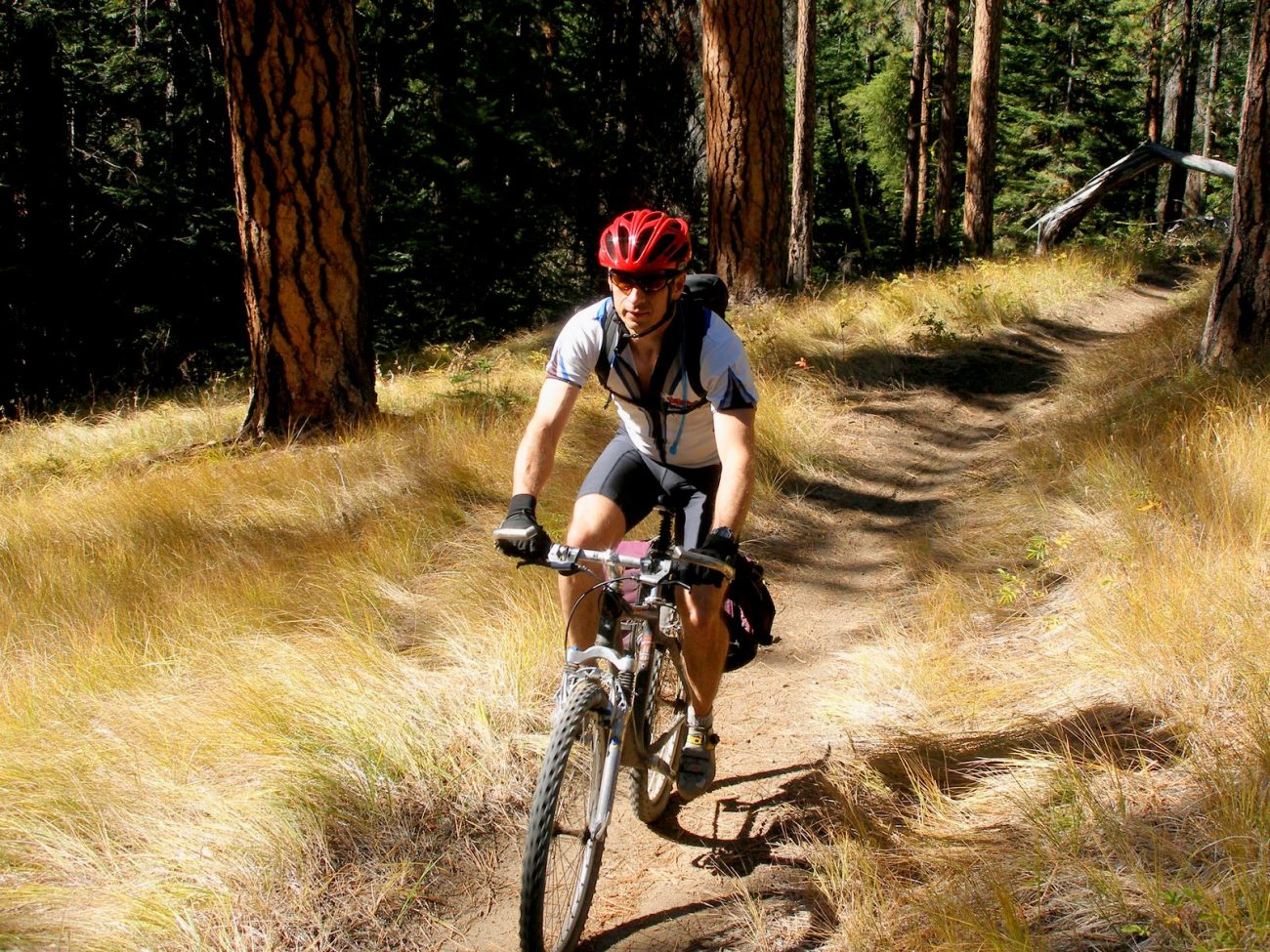by Andy Dappen

“If any one passes us, they’re going to wonder whether we’re the two the dumbest riders they’ve ever seen. Gary Womeldorff, my riding partner, is mulling over the fact that we are not just riding  up Devil’s Gulch, one of Washington’s most popular downhill mountain-bike rides, but that we’re hauling overnight gear over what most would consider a half-day ride. “Not to worry,” I tell him. “That’s not nearly as damaging as the two of us wondering about the same thing.” We’ve had moments of doubt about our tactics over the past 24 hours as we’ve each hauled an extra 15 pounds of gear over our route. This has consumed extra energy and had us pushing bikes up some technical terrain we might have ridden without the added lard. But ‘bikepacking,’ what we’re dubbing this multi-day form of mountain biking, has clear benefits. With overnight gear in tow, there’s no stress about racing darkness when we find ourselves misplaced—we’re perfectly prepared to get lost. Yesterday we were able to start this long ride at the crack of noon rather than the crack of dawn. And bikepacking has slowed down the inexorable mad dash of time—tossing and turning on the hard ground last night had an eight hour night feeling like 80. Finally there’s the pragmatics of completing long rides that normal riders might have trouble tackling in a day. On this ride, for example, we combined various rides found on WenatcheeOutdoors’ on-line guidebook (Naneum Creek Figure-8 Loop, Tronsen Ridge Ride, Red Hill, Devil’s Gulch) into a two-day push rather than an insanely long single-day haul. Toting extra weight over many miles of trail has its sour side, but we found that the offsets were…sweeet.
up Devil’s Gulch, one of Washington’s most popular downhill mountain-bike rides, but that we’re hauling overnight gear over what most would consider a half-day ride. “Not to worry,” I tell him. “That’s not nearly as damaging as the two of us wondering about the same thing.” We’ve had moments of doubt about our tactics over the past 24 hours as we’ve each hauled an extra 15 pounds of gear over our route. This has consumed extra energy and had us pushing bikes up some technical terrain we might have ridden without the added lard. But ‘bikepacking,’ what we’re dubbing this multi-day form of mountain biking, has clear benefits. With overnight gear in tow, there’s no stress about racing darkness when we find ourselves misplaced—we’re perfectly prepared to get lost. Yesterday we were able to start this long ride at the crack of noon rather than the crack of dawn. And bikepacking has slowed down the inexorable mad dash of time—tossing and turning on the hard ground last night had an eight hour night feeling like 80. Finally there’s the pragmatics of completing long rides that normal riders might have trouble tackling in a day. On this ride, for example, we combined various rides found on WenatcheeOutdoors’ on-line guidebook (Naneum Creek Figure-8 Loop, Tronsen Ridge Ride, Red Hill, Devil’s Gulch) into a two-day push rather than an insanely long single-day haul. Toting extra weight over many miles of trail has its sour side, but we found that the offsets were…sweeet.

Bikepacking’ could be considered the mountain-biking equivalent of backpacking. A light sleeping bag, non-cook food, minimal clothing, and a tarp is carried in panniers attached to a seat-post rack. Straps secure the load for single-track riding. On this trip, Gary and I rode from Blewett Pass toward Haney Meadows, branched off on Naneum Rim, followed Tronsen Ridge to Red Hill, dropped into and then climbed Devil’s Gulch, and then followed Road 9712 back to Blewett Pass.

It’s hard to argue with the scenery along Tronsen Ridge.
Another advantage of overnight rides: You can ride during the prettiest hours of the day—late afternoon and early morning.

When we were riding up the Devil’s Gulch Trail most people prefer descending this classic ride, but it’s also a fun climb. Do it early in the morning before the downhillers arrive.
Glades of pine grass and ponderosa pines were up high on the Devil’s Gulch Trail. Gary carried his normal day kit on his back. This included two liters of water, food for the day, and bike tools. We carried drops to purify water along the way. On this ride in mid-September, we each drank a total of 6 to 7 liters of water.
At the top of Devil’s Gulch, we followed Forest Road 9712 back to Blewett Pass. It’s long but, in bikepacking mode, the miles roll by quickly. Over two days we covered 55 miles. Bikepacking made the route feasible to normal mortals. And spending the night out was just plain fun.

A good website to check out for how to info and cool routes is Bikepacking.com
This article was originally written in 2005.



